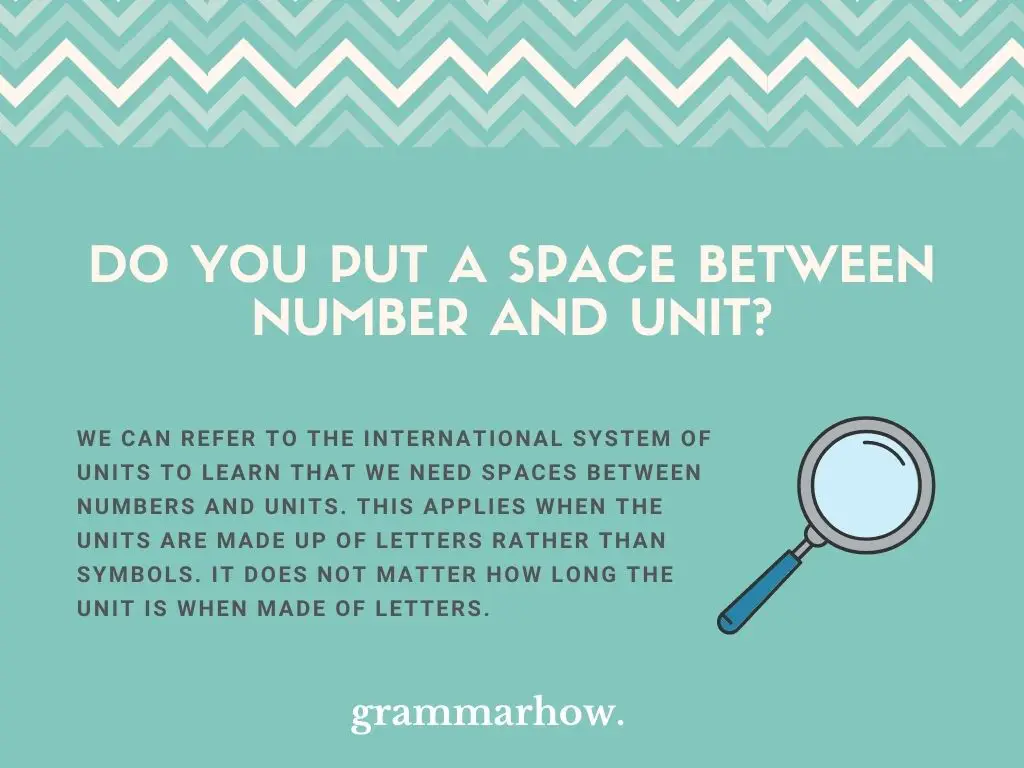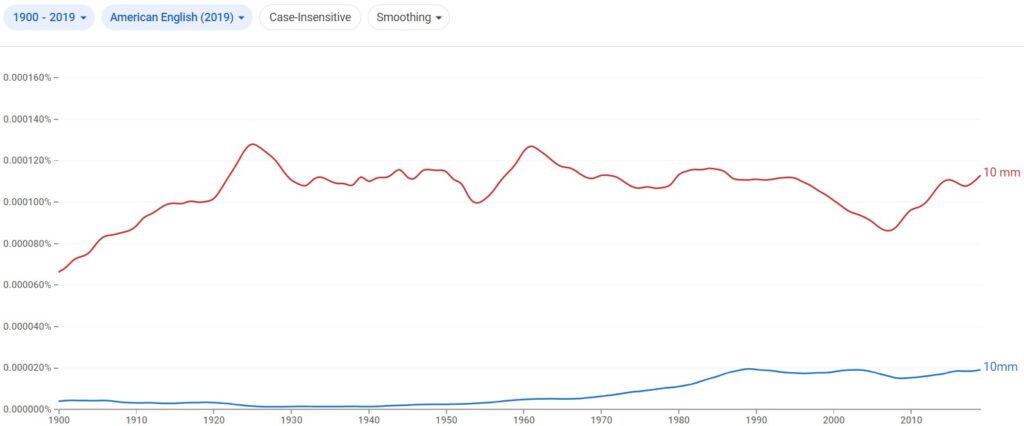When working with units, it would help to know whether you need spaces between certain numbers and units. For example, we might see 10 m or 10m used for a ten-meter measurement. This article will explore which the correct form is.
Do You Put a Space Between Number and Unit?
We can refer to the International System of Units to learn that we need spaces between numbers and units. This applies when the units are made up of letters rather than symbols. It does not matter how long the unit is when made of letters.

It might help to see some common units that show you how these rules apply:
- 10 m
- 100 kg
- 16 hL
As you can see, no matter what the units are made of or how long they are, they should always come with a space between the number and unit.
It can be common for native speakers to forget about this rule. Sometimes, they will write their numbers and units as one combined entity (i.e. 10m or 100kg).
This is technically incorrect, so it would be better if you avoided using this yourself.
However, since it is quite common, you shouldn’t be surprised if native speakers do not correct you for it. They probably won’t realize that there are grammatical rules associated with the use of units and numbers.
Do You Put a Space Between Number and Unit Symbol?
While letters require spaces, there is an exception that relates to unit symbols. According to the International System of Units, the symbols for the degree, minute, and second for plane angle do not come with a space between the number and the unit.
Here’s how they look to help you understand what these numbers do:
- 10°
- 5′
- 16”
Unlike the previous section, where native speakers might write “10m” and “10 m” interchangeably, the rules are kept more strict here.
It’s rare to find anyone using a symbol measurement like we’ve listed above and including a space between them. For example, you wouldn’t see anyone write 5 ‘ because the apostrophe after the 5 would look very strange if there is a space between them.
It’s best to keep the number and unit together in all of these cases because symbols can look very out of place when they’re written as their own unit in a sentence.
Imagine the following examples:
- It’s about 45° out there. That’s going to be really hot!
- I think it’s about 17 °. How lovely.
As you can see, including the space between the number and the unit in example 2 makes it a little more jarring to read.
Should There Be a Space Between Number and Unit In The UK?
There should be a space between the number and unit in the UK. The International System of Units is an international regulation, which means it applies to almost every country. The only reason a space wouldn’t be used is if someone chooses to avoid it.
It’s always correct to use the space. However, some native speakers do still like to use units without spaces because they believe it makes more conceptual sense.
According to Google Ngram Viewer, “10 mm” is more popular than “10mm.” This shows us that the space is the most popular choice in British English.

However, “10mm” does still see a great deal of usage, showing that it’s possible to write it without the space in some cases (though this ignores the standard rules that you should expect.
Should There Be a Space Between Number and Unit In The US?
In the US, the space is still required. Again, we are following international rules associated with units, so it makes sense that both the US and the UK require a space between the numbers and the units used, as long as the rules are followed.
According to Google Ngram Viewer, “10 mm” is vastly more popular than “10mm” in the US. Clearly, more value is put on the international rules for units when using American English.

Of course, the non-space version of “10mm” is still used, but it’s not as common.
This mainly comes from native speakers who are rushing their work (or choose not to care about the space rules with numbers and units). It mainly comes down to a design or conceptual choice in these cases.
For the most part, you should always include the space when you want to follow the rules correctly.
Space Between Number and “mm”?
There should be a space between a number and “mm.” Whenever we’re referring to a physical measurement in this way, we are using two letters to refer to the distance of something. This applies to the letter rules established by the International System of Units.
- Correct: This has been measured as 10 mm.
- Incorrect: I need it to be 35mm. Can you do that for me?
Space Between Number and “ml”?
The units for liquid volume also work with a space between the number and the unit. Again, it’s a combination of letters, so we must make sure to include the space between the number and unit when showing how the two work with each other.
- Correct: I need to fill 100 ml worth of liquid.
- Incorrect: It only contains 250ml.
Space Between Number and “lb”?
Pounds can be abbreviated to “lb” or “lbs.” In either case, we must include a space between the unit and the number because it is still a combination of letters with no symbolic presence. It’s important to include the space when using it.
- Correct: I need to lose 13 lbs by the end of the week.
- Incorrect: It’s about 2lbs. Is that enough?
Space Between Number and “ft”?
The unit for “feet” still applies when including a space between the number and the unit. When using “ft,” we must make sure to place a space between the number and unit to show that there’s a clear difference between how we measure the things.
- Correct: It’s about 10 ft away. Can you make it?
- Incorrect: I’m 6ft tall.
You may also like: Do You Put a Space Before a Percent Sign? Full Explanation

Martin holds a Master’s degree in Finance and International Business. He has six years of experience in professional communication with clients, executives, and colleagues. Furthermore, he has teaching experience from Aarhus University. Martin has been featured as an expert in communication and teaching on Forbes and Shopify. Read more about Martin here.
